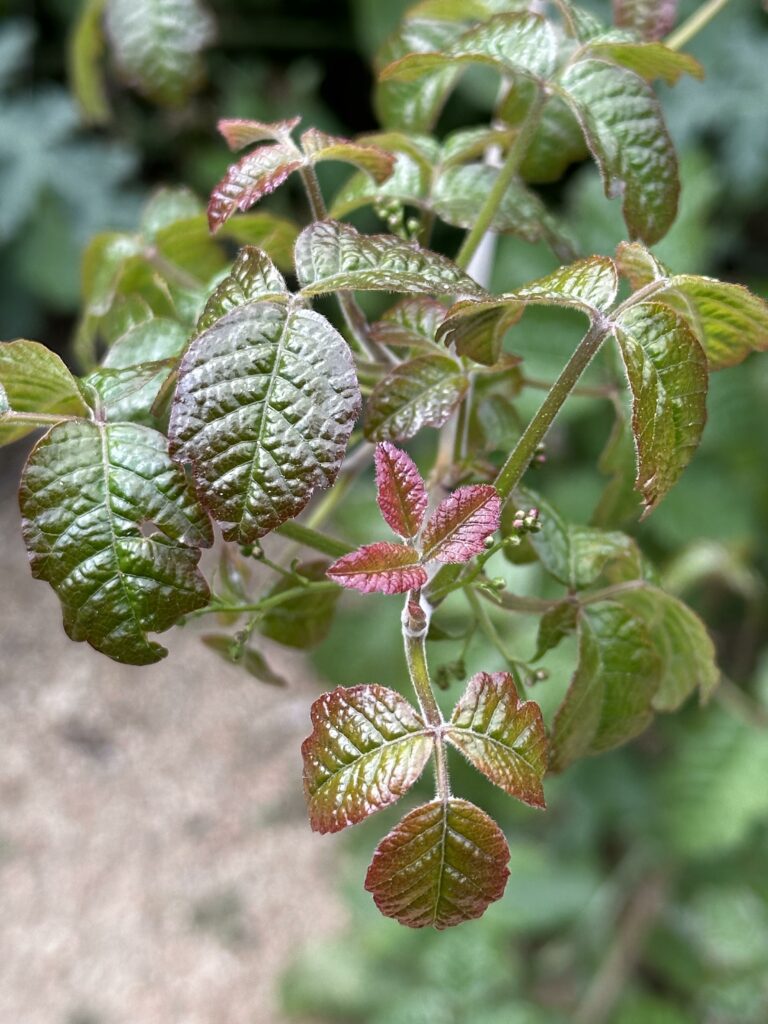
Our Dreaded Poison Oak & Poodle-Dog Bush
Some plants in the forest are best left avoided, unless you like being “Itchy Scratchy” for days on end. As trail work volunteers, commonly clearing overgrown brush, it’s inevitable to encounter Poison Oak and Poodle-Dog Bush in the Angeles National Forest. Sometimes avoidance simply isn’t possible when one needs to clear the trail corridor.
Usually below 4000 ft elevation, Poison Oak is found in forest watershed areas.
“Three Leaves, Let it Be” describes the plant as it has three oak-tree like leaves that all connect from one stem. Commonly found in Oak Tree zones, you will encounter Poison Oak along popular trails like El Prieto and Gabrielino.
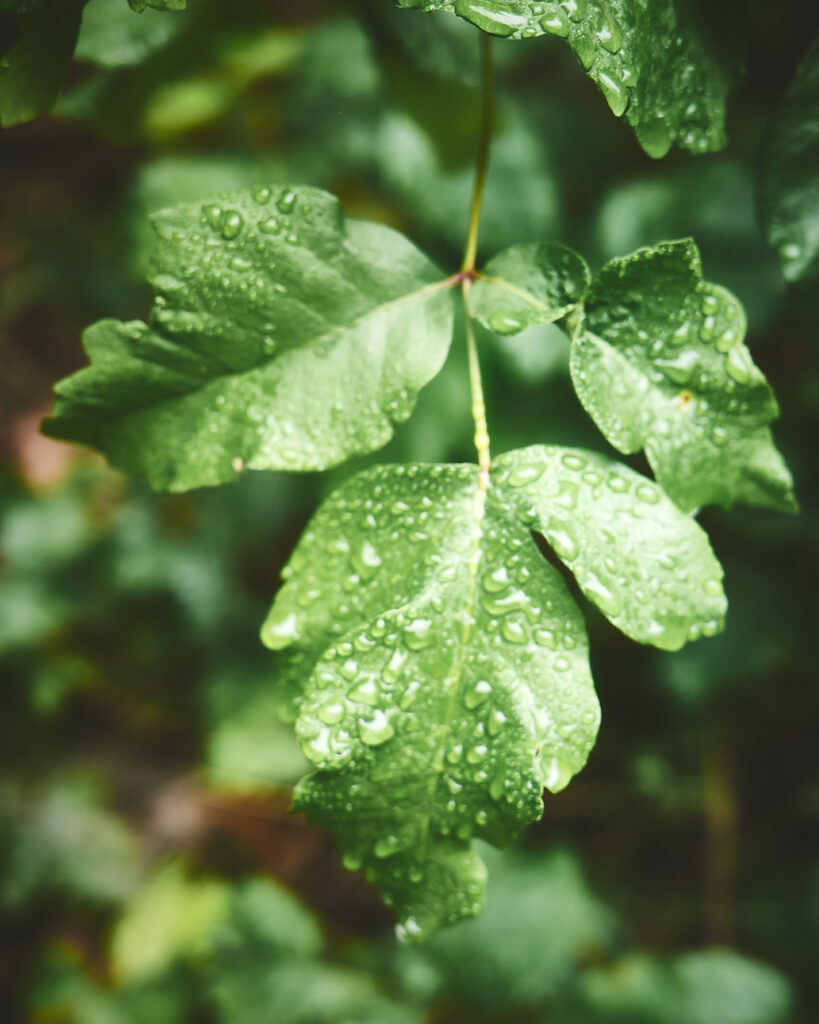
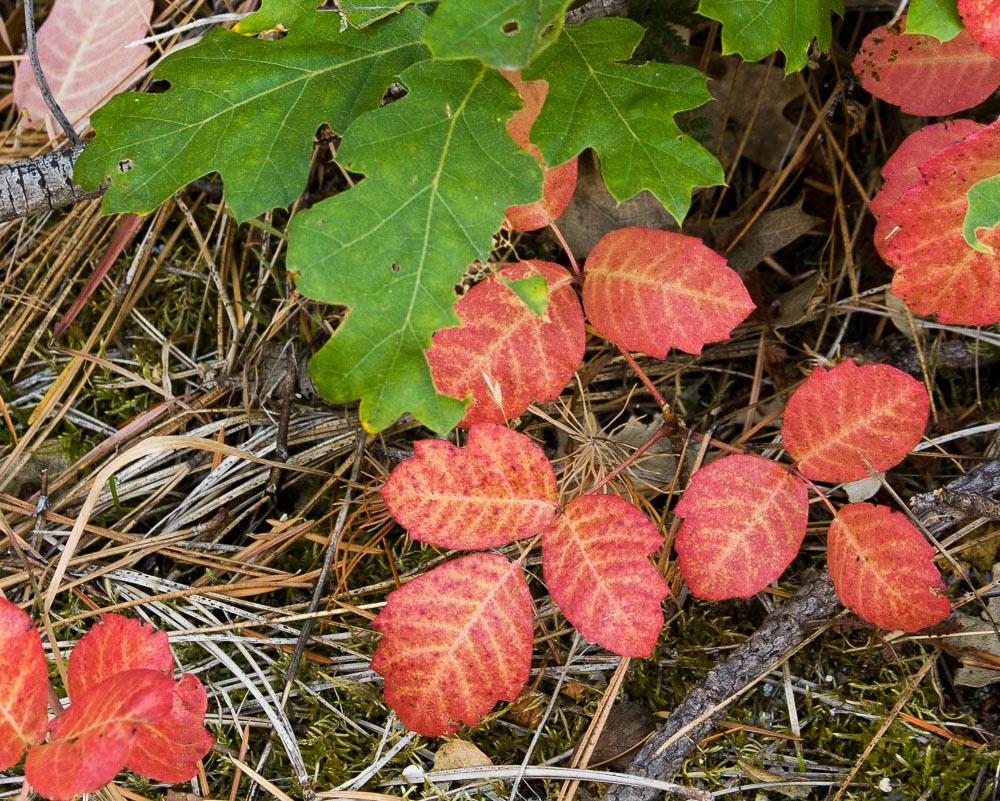
Poison Oak can appear as groundcover or a vine climbing tree trunks. Throughout the year, it’s leaves vary from green to bright red to nonexistent. Poison Oak’s unfriendly nature stems from its Urushiol Oil. The oil is most present on fresh spring growth; however, some believe the oil even is found in the soil around the plant growth.
Many people react poorly to exposure to Urushiol Oil with bad rashes that can last for days. Some lucky folks do not react at all to Poison Oak. If you have one of those Super Hero’s on your trail crew, put them up front with the hedger! Because it’s an “oil”, Urushiol can stay present on clothing, gloves, boots, etc. for years. It is unfortunately easy to “get Poison Oak” again and again from your gear.
Poodle-Dog Bush is a less common plant most prevalent in some Southern California forests
Unlike Poison Oak, Poodle-Dog Bush (Eriodictyon parryi) is not ever present but is a plant with a symbiotic relationship with forest fires. Poodle-Dog Bush lays dormant and unseen until a forest fire comes through and removes all the chaparral. It comes to life via the heat from the fire and grows promptly in heavily burned areas.

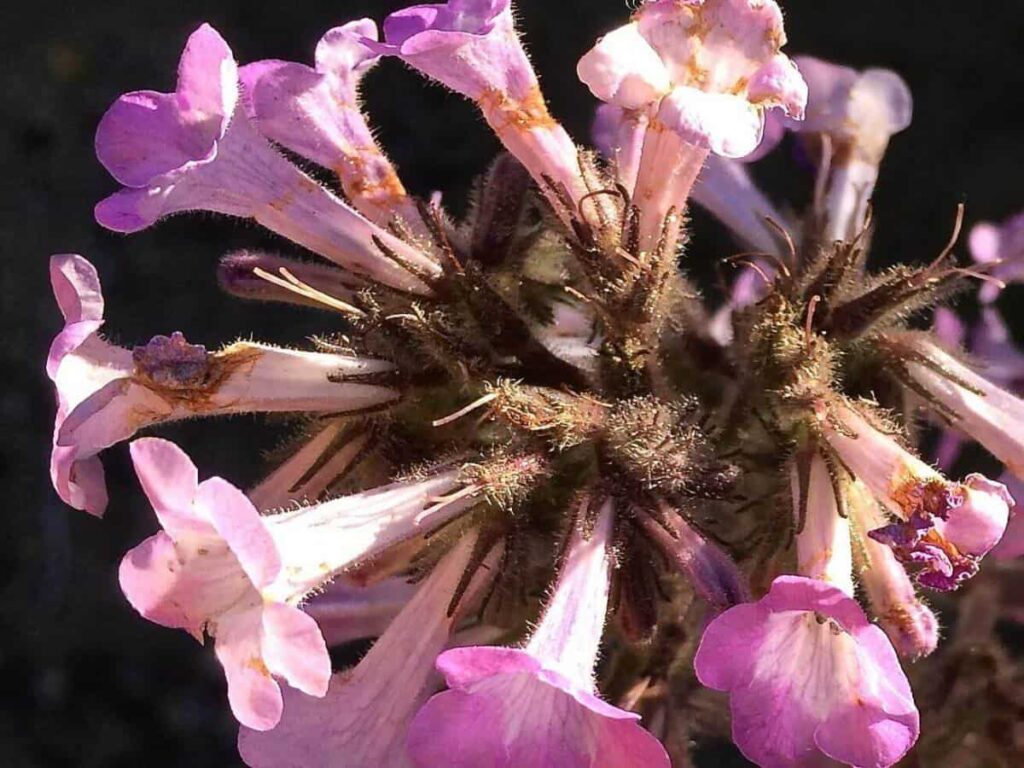
Its’ ecological mission is to hold the soil in place while the chaparral can recover. Southern California’s torrential winter rains can cause dramatic sediment flow in burned areas of our steep mountains. Poodle-Dog Bush helps the mountains stay together while the forest heals. Usually, around 10 years later, once the chaparral grows taller than the Poodle, it dies off and awaits the next fire.
At first glance, Poodle Dog is a unique and pretty plant. In the spring, it has stunning purple flowers. However, Poodle Dog can bite. & bite hard. Unlike the oil present on Poison Oak leaves, Poodle-Dog Bush contains tiny little fibers that will stick to you. Similar in concept to fiberglass, these fibers can be highly irritable and produce a rash much like Poison Oak. Some people do not react to the plant at all and others react extremely.
Minimize contact with your skin to avoid rashes
Contact with the plants may be unavoidable on trail workdays, but that doesn’t mean it must get to your skin. Staying covered is key. Long sleeves, long pants, & gloves are required for trail work with Lowelifes Trail Crew.
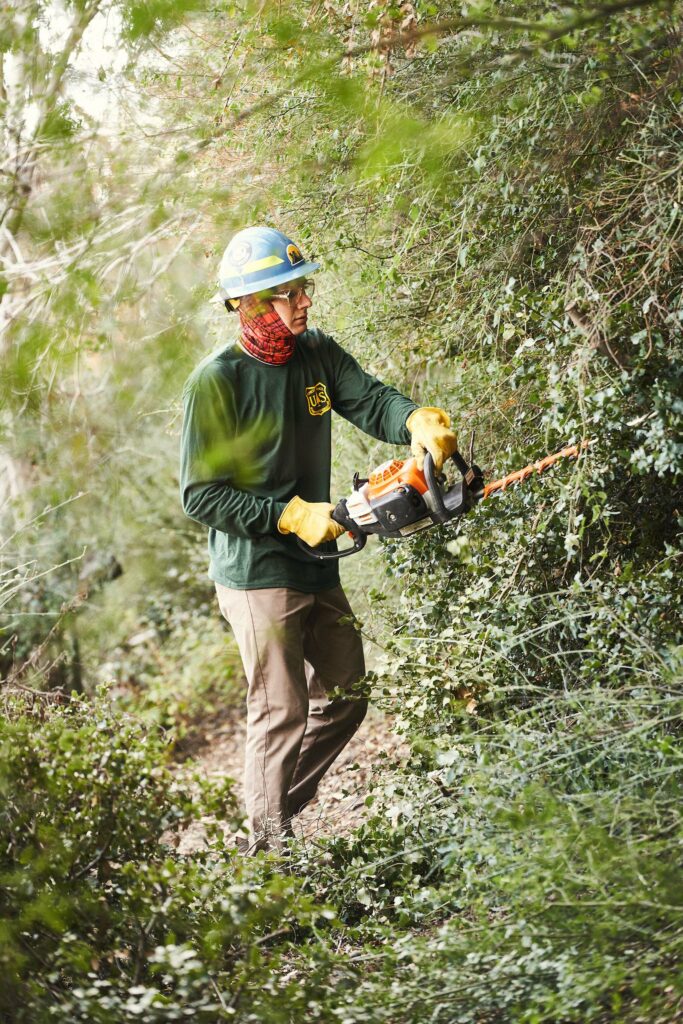
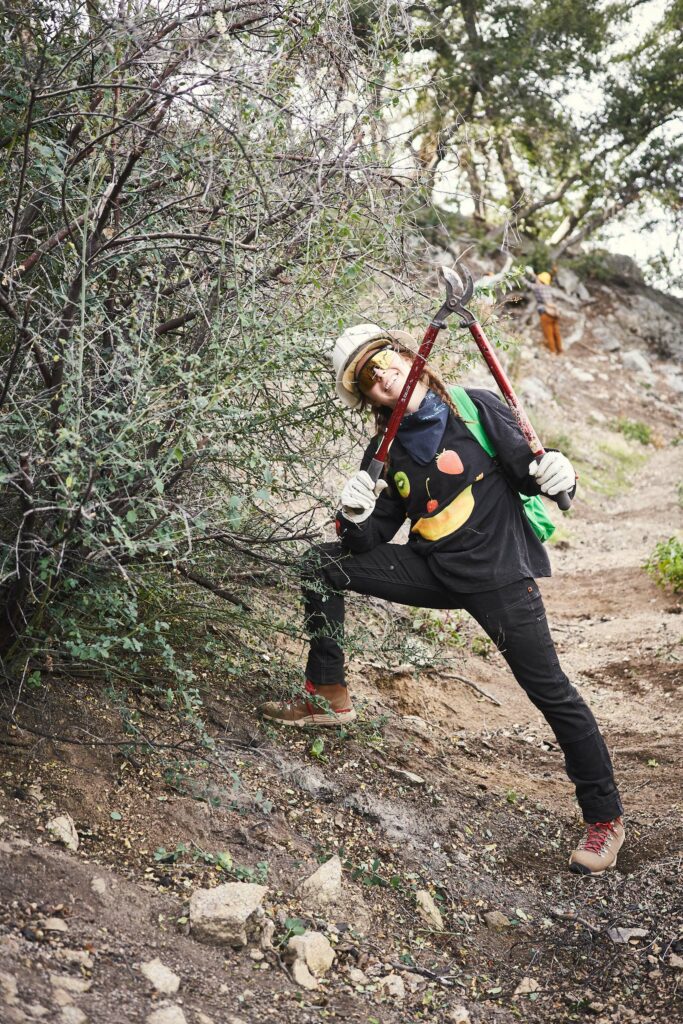
Lowelifes’ Erik Hillard goes deeper with his protection: “Personally, I am fan of wearing multiple layers when working in areas of Poison Oak and Poodle Dog. Under my usual long sleeves and long pants, I add thin base layers. My long sleeve base layer has thumb loops to keep it snug into my gloves and is always tucked into my pants to minimize anything getting under it. My lower base layer is under my socks to keep any dirt from getting to my skin via my pant cuffs. Do I get hot? Sure, but quality base layers are very “breathable”, and do not trap much heat. The additional layers do help minimize any Poison Oak and Poodle Dog getting to my skin. It works for me.”
Working “smart” is very important too
Clearing Poison Oak? Don’t touch your face with your gloves! Consider anything that has contacted the plants to be contaminated. Going into your backpack for something? Take off your gloves! Don’t handle tools without gloves that were used to cut Poison Oak or Poodle Dog. Poison Oak branch slap you in the chest? Remember that it’s there when you take off that shirt later and don’t brush that part against your face.
When you get back to your vehicle, have a change of clothes available. Put all your contaminated trail work gear into a garbage bag so it doesn’t get on your car’s interior.
Back home, it’s time to clean up
Don’t add your dirty clothes to the family laundry basket. Immediately & separately wash your trail work clothes (& maybe your gloves) in warm/hot water with a quality detergent. A tablespoon or two of grated Fels Naptha is great to add into the mix as it does a great job removing oil. If you prefer to wash clothes in cool water, put the grated Fels Naptha into some warm/hot water to get it sudsy and add that mixture to your laundry. Fels Naptha will not dissolve well in purely cold water. Don’t hesitate to wash your gear twice if it was a heavy exposure workday.
Dawn dish detergent (or similar) is a great soap to remove Poison Oak’s oil from your skin. Since Poison Oak’s itchy friend is an oil, using an oil-removing soap AND friction is very important. A washcloth or loofa really helps with removing the oil.
Erik Hillard swears by Dawn after trail work: “I keep a small bottle of Dawn in our shower. I start my shower with lukewarm water as hot temps opens your skin pores and will let the Poison Oak oil right in. For my second & maybe third round of Dawn scrubbing, I increase the shower temperature for comfort.”
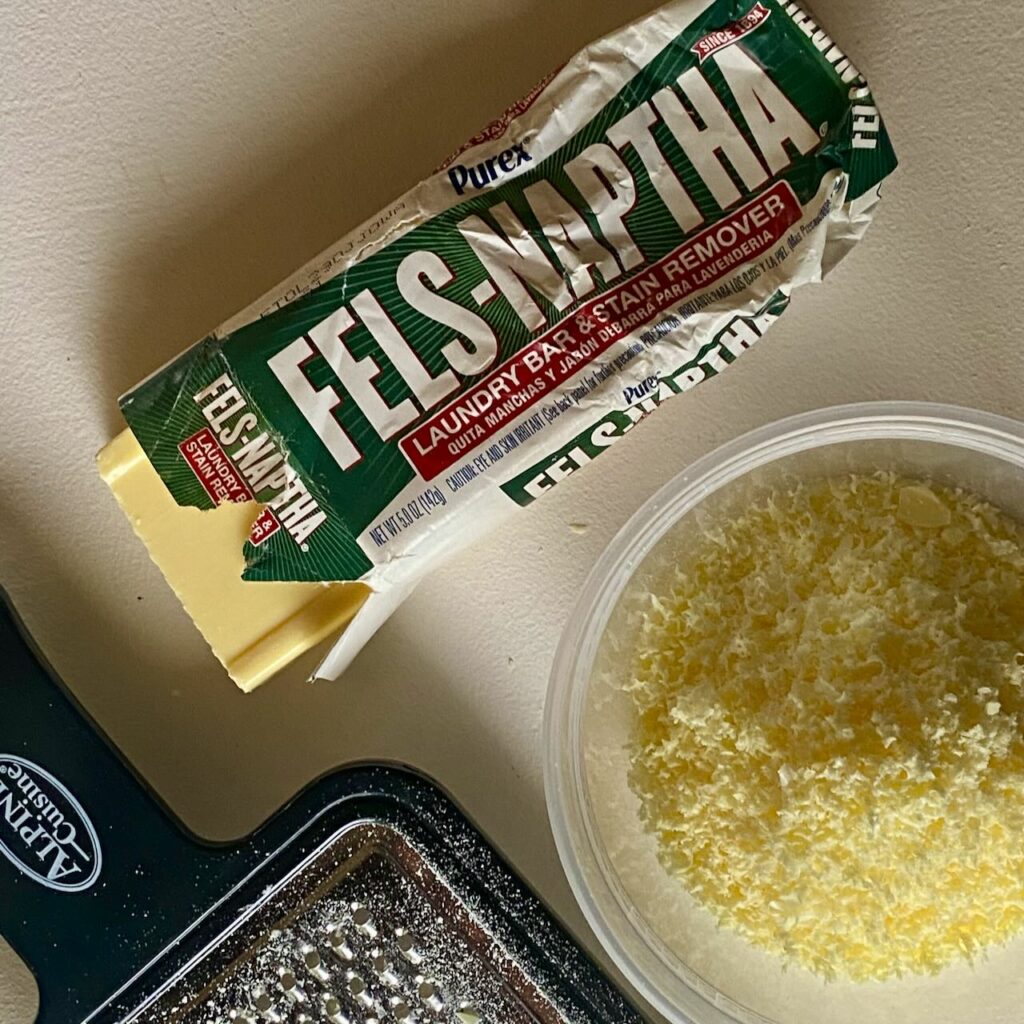
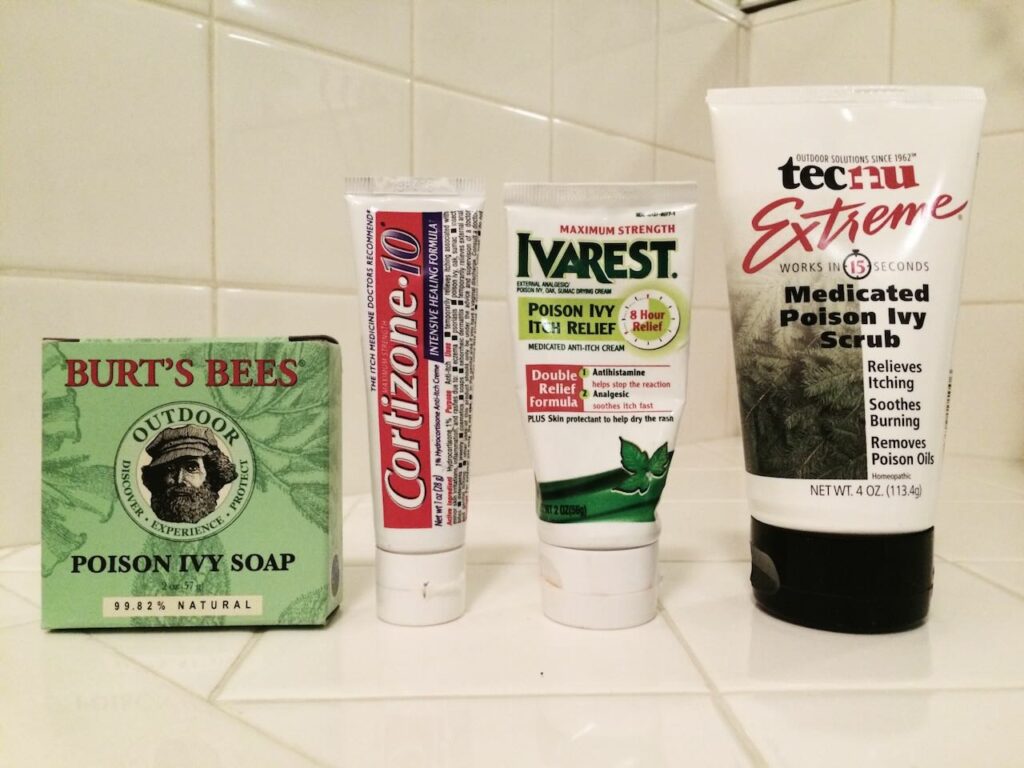
Expensive products like Tecnu, Zanfel, and others work great as well. However, Fels Naptha and Dawn do the job for less cost. Ultimately, you need to try things out to discover what works best for you.
What about cleaning up from Poodle Dog? Working smart, minimizing exposure, and thoroughly washing yourself and your gear is still the best way to avoid rashes.